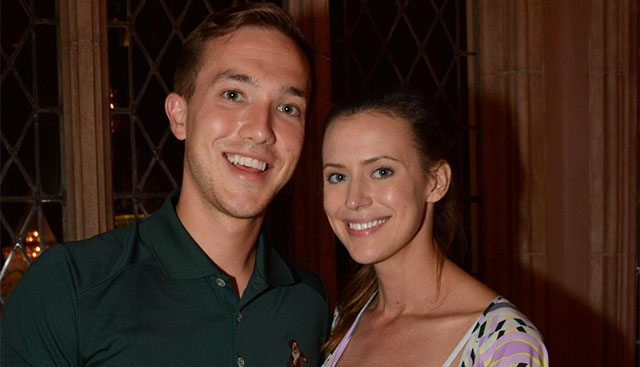
After Misdiagnosis, Patient Finds Pain Relief Thanks to Minimally Invasive Surgery
Katie was young and active so when she started experiencing chronic back pain, she thought it was just her body getting used to a new routine.
As a recent college graduate, she had started a new career that required more walking than she was used to.
The pain kept getting worse and was occurring more frequently so she made an appointment with a doctor who recommended physical therapy and exercise.
Katie's back pain became unbearable though and she knew something was seriously wrong.
She persisted and pushed to get a second – and even third - opinion. One doctor told her that she may have scoliosis; while a surgeon recommended a laminectomy, a type of surgery that involves the removal of a small section of bone in the spine.
Confused and not sure where to turn, a family friend referred Katie to Moffitt Cancer Center where she met with Dr. James Liu, a neurosurgeon in the Neuro-Oncology Program who specializes in treating tumors of the spinal cord and spinal column.
A full range of testing revealed that Katie had a large tumor on the lower right-hand side of her back. The diagnosis was a schwannoma. Schwannomas are a rare type of tumor that originates from cells called Schwann cells, which protect and support nerve cells. When these tumors grow to a large size, they can compress nearby nerves and result in pain and weakness.

Schwannomas are often benign, but in rare cases, they can become cancerous. In Katie's case, her tumor was benign.
"I was full of emotion and didn't know how to deal with the new diagnosis. Everything went fuzzy. I wasn't in the state of mind to process the information," said Katie.
Dr. Liu walked her through a personalized treatment plan, which included surgery.
"The word surgery was very scary to hear," said Katie. "But Dr. Liu was kind and clear with how the procedure will be done, which was very comforting."
The five-hour procedure went smoothly. Dr. Liu used a minimally invasive approach using specialized retractors through a small incision. He was able to reach the tumor with minimal disruption of the spinal muscles and without the need to remove any bone from the spine. Dr. Liu preserved the major nerve from which the tumor was growing and completely removed the tumor.
"It was important to find an approach that would allow us to remove the tumor with as minimal disruption to the spine as possible. I especially wanted to avoid excessive bone removal to reduce the need for a spinal fusion," said Dr. Liu. "I also wanted to adequately assess the tumor to make sure it was completely removed."
Four years later, Katie is fully recovered and still marvels at how quickly her back pain subsided.
"When I woke up from the surgery, the pain was gone. I was able to walk around quickly and was discharged from the hospital two days after the surgery. It also felt good to be able to sleep without the pain," said Katie.
Looking back, Katie stresses the importance of advocating for your health, seeking an expert opinion, and having a good support system. But most importantly, to be forgiving to yourself.
"Don't be embarrassed that you can't do certain things. Allow yourself the time and space to be healthy," she said.
